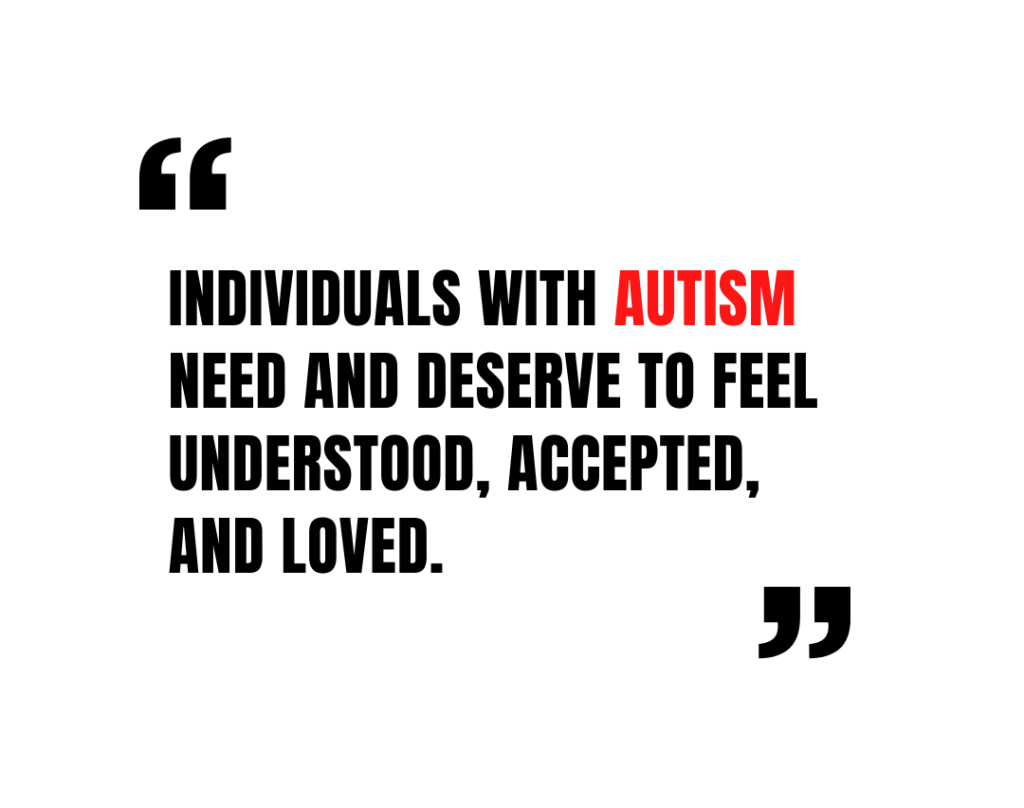Empowerment Through Understanding – An Article By Samantha Lai
- Home
- Empowerment Through Understanding – An Article By Samantha Lai

Empowerment Through Understanding – An Article By Samantha Lai
Have you ever felt misunderstood? Like you were trying to communicate, but no one was listening? For individuals with autism, this is an everyday reality. Samantha Lai, a former Communicative Disorders Assistant and Behaviour Therapist, has spent years working with children with autism and their families. In this interview, she shares her unique insights on the importance of understanding, empathy, and connection in the autism community. Her journey is a testament to the power of small victories and the transformative impact of human connection. Get ready to see the world through a different lens.
Individuals with autism need and deserve to feel understood, accepted, and loved. This is a universal truth. Working with children with autism showed me that parents and caregivers of children with autism need empathy and understanding all the more.
My time as a Communicative Disorders Assistant and a Behaviour Therapist has been greatly rewarding and has shaped who I am as a person. Having worked with children with autism and their families has reinforced the importance of empowering others through understanding, a practice that can and should be done by everyone from all walks of life.
Building a relationship with and understanding both children and their parents/caregivers lays the foundation for trust.
Therapists who work with children with autism know very well that the first and most important part of every therapy session is something call pairing. Pairing is basically a fancy term for creating a positive association between the therapist and enjoyable experiences for the child, whereby the therapist becomes a source of fun, comfort, and positivity. This helps the child feel safe and motivated to engage in therapy sessions.
During pairing, I will determine the child’s comfort level and follow their lead in some fun freeplay. If they’re not ready to play WITH me, I’ll play alongside them, imitate what they’re doing, and vibe with them that way. What’s important, too, is that little to no demands are made of the child during this time (this is a time to connect, not to test them!).
Over time, I get to know my clients very well. Of course, their intervention plan has already been tailored to their individual needs, but really understanding their individual personalities, strengths, and triggers, informed me of how I conduct a therapy session and allowed me to gauge how far to push or not push them. This solidifies trust, even in the face of non-preferred activities. It lets the child know that they are safe with this person, even if they are making you sit down at a table to go through boring learning cards.
Collaboration with parents/caregivers is also vital to the success of the child. And to collaborate with parents, you must build trust. I had their child’s best interest at heart, and I showed them that by being dependable, keeping them informed of progress, demonstrating understanding and patience, and just doing what I did best.
Understanding autism is a journey that requires patience, adaptability, and grace.
As meaningful as being a therapist was, it also wasn’t an easy job. I’ve been bitten. I’ve had my hair pulled. I’ve been scratched. I’ve been urinated on. I’ve had objects thrown at me. I’ve been spat on. The list goes on, and this is not to complain about the woes of the job, but to emphasize that understanding autism is a journey that requires patience, adaptability, and grace. And for the parents I worked with, it’s a journey that pays off well.

There was a parent I once worked with who had a better-than-everyone attitude. She was cold towards me during therapy sessions. When I tried making conversation and connecting with her, I received one-word responses. She often questioned, even challenged my approaches when they didn’t work the first time. But as her son made progress, she became… warmer, more relaxed. I could tell that she wasn’t warming up to me just because therapy was working, it was more of a sense of relief, like she was now able to shed off some of the weight of the world.
Once I was able to better understand this standoffish mother, I could finally connect with her and build mutual trust and respect that would lead to a collaboration that would only empower both mother and son.
Empowerment can come in the form of small victories. For children with autism and their parents, small victories are huge battles won.
Communication is often a huge barrier for both child and parent. Children with autism can get very frustrated with not being able to communicate their needs and can subsequently end up having an uncontrollable meltdown, while parents are left feeling helpless and powerless.
I once had a young non-verbal client and we were working on using a communication device, which was a speech-generating device. I had just entered the home for a therapy session. No matter how much pairing I had done with her, she still knew that I was here for another therapy session, and she was not in the mood. Mom and I watched her as she reached for her communication device and we heard the computerized voice say, “Goodbye.” Mom and I just looked at each other and broke down laughing. Her message was crystal clear. We were both just so proud that she used her communication device functionally and effectively.
Understanding and Empathy Can Transform Lives
A little bit of understanding and empathy can go a long way. If you’re a therapist or medical professional, I encourage you to understand and see what’s beneath the behaviours, the doubts, and the worries of your clients and patients. Meet them where they are and truly understand them in order to empower them.
If you’re not a part of the autism or disability community, I encourage you to show understanding and acceptance especially to those who may be different. Everyone deserves to feel understood and accepted for who they are.
- Share
Samantha Lai
Samantha Lai is a dedicated communications professional who is passionate about making a positive impact. She currently works as a Communications Specialist at the ErinoakKids Centre for Treatment and Development, where she uses her skills to advocate for children with disabilities. Samantha's background in marketing, social media, and photography, combined with her experience as a Communicative Disorders Assistant, gives her a unique perspective on the importance of communication and connection.
